Delayed notice for Bloomington water shutoff leaves one CBU customer dry, questioning reconnection fee
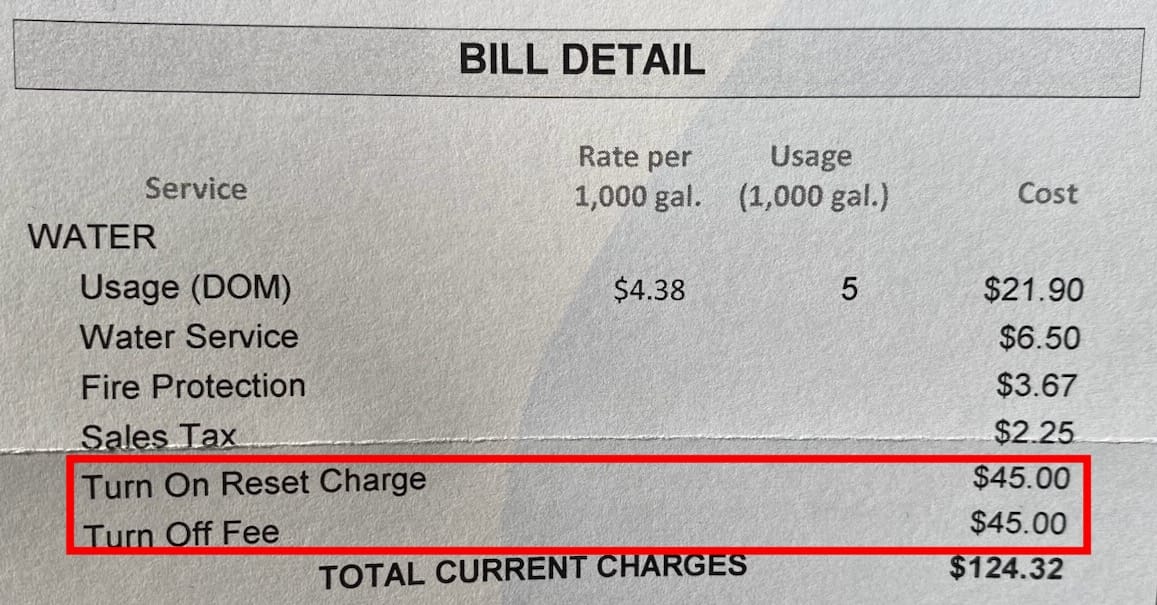
If you don't pay your water bill, the City of Bloomington Utilities (CBU) will eventually disconnect your service. That was not a surprise to one B Square reader who recently had his water shut off.
But he was surprised that he didn't get the kind of advance warning he figured was required. On March 17, he received a shut off notice in the mail, and by mid-morning on March 18, when he went to take a shower, all he heard was a gurgling sound.
The day before, he'd tossed the shut off notice onto the dining room table—he knew what it was, because he had received one before. He realized at that point he really had to pay the bill. But he didn't think he had to act in less than 24 hours.
He told The B Square that when he opened the notice—which he received in the mail on March 17—he saw that the envelope contained a shutoff letter dated Feb. 27, but was postmarked March 5. If the letter had arrived within a few days of the postmark, that would have meant least 7 days before the water was shut off. (Indiana's administrative code prohibits disconnection except after 7 days prior written notice.)
The CBU customer service representative who answered his phone call was "polite and professional," but told him the $90 in fees for the disconnection and reconnection was not negotiable. It could be spread out over more than one future bill, but could not be reduced.
The customer service representative indicated that delays in postal delivery are a known issue—but CBU is working on a new, higher tech notification system where you can sign up for texts to your phone.
Running water is a basic municipal service that serves a fundamental human need. Under state law, a lack of potable water can factor into a determination that a child is "in need of services" and lead to removal of the child from the premises.
When is CBU's newer, better notification system going to be available? How often do CBU water customers get their water shut off for non-payment? Does CBU do anything to help people pay their water bills so they can avoid a shut off?
Notification through electronic communication
CBU director Kat Zaiger confirmed what the customer service representative told the B Square reader, who received a delayed notice through the mail: CBU hopes to roll out a new electronic notification system sometime in the second quarter of this year. That's sometime in the next three months.
Responding to an emailed B Square question, Zaiger wrote that CBU is working on that system, because "physical mail may not be as relevant of a communication standard as it maybe once was." CBU's recently updated rules and regulations on termination of service already include reference to the "preferred electronic communication" that is indicated on a customer's account. Zaiger wrote: "We are still working with the vendor and our IT Department to get this up and running."
Zaiger said for now CBU is mailing letters and leaving physical door tags as notifications for shutoff. The B Square reader whose water was shut off said that he did not get a door tag left at his house.
Zaiger responded to a question about why the person who is dispatched to shut off the water, or who is there to hang a door tag, doesn't just knock on the door and tell the person who answers about the upcoming shut off. "We currently hang door tags, but do not knock on doors, as just hanging the door tags has led to situations where staff have been verbally abused and even spit at by customers. I do not wish to put our crews in those situations if it can be avoided," Zaiger wrote.
Zaiger also responded to a question about why CBU doesn't call customers who are at immediate risk of having their water shut off: "Our rules and regulations require a written notification for shut off."
Zaiger wrote that a delay in the arrival of a mailed shut off notification letter could be the basis of an appeal to Bloomington's Utilities Service Board—but that does not means such an appeal would be granted.
The B Square reader who had his water shut off reported that he paid his bill the same day and had his water service restored inside of an hour. He still questions the need and fairness of the $90 in fees for a shut off and reconnection.
Shut offs by the numbers
Based on data provided to The B Square by CBU, starting in 2021, an average of around 1,200 shut off notices have been sent each month to the roughly 25,000 accounts that were billed in those months. That's a little under 5% of accounts that have gone unpaid for at least two months.
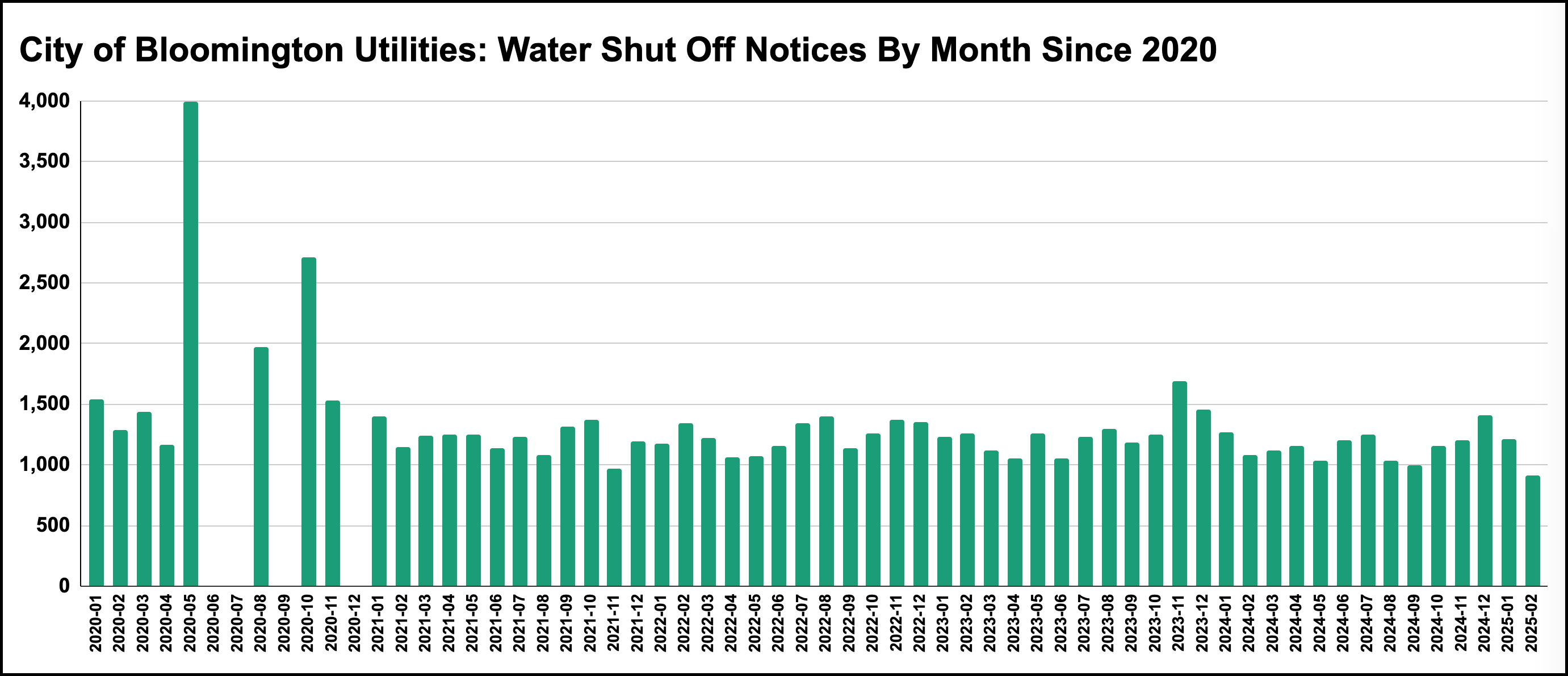
Based on numbers from CBU, an average of around 800 shut off work orders have been issued each month. That works out to about just one-third of customers who respond to shut-off notices by paying at least part of their bill. But the numbers available from the city's online financial system don't add up to the amount of revenue that would be seen (around $860,000 annually), if CBU were collecting $90 for each of those disconnected and reconnected accounts.
Zaiger responded to a B Square question about that apparent discrepancy by clarifying that not all work orders that are issued are actually completed. The total number of completed shut off orders for 2024, which is the only full year for which such data is available, indicate that 2,015 actual shut offs were done for the whole year. At $90 per shutoff, that would work out to $181,350, which is in the ballpark of the $188,287 reflected in the city's online financial system.
The 2,015 actual disconnections stack up against 13,900 shut off notices that were sent. That means in 2024, about 85% of customers who were sent a shut off notice managed to avoid the termination of their water service.
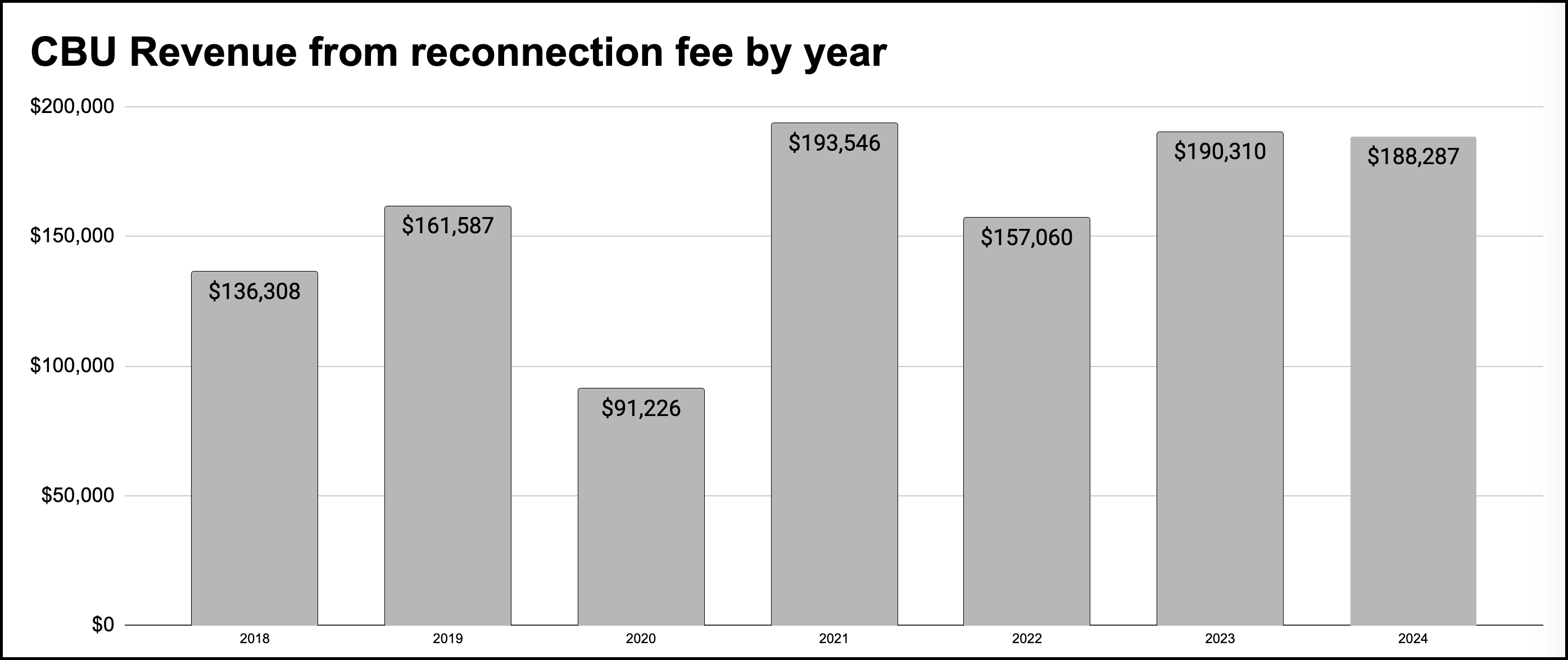
Still, for the 2,015 customers whose water was shut off in 2024, it meant $90 in fees related to getting the water turned back on. And CBU's financial assistance program can't be used to cover those fees.
Asked about the idea that the $90 in reconnection fees could be analyzed as a tax on people for being poor, Zaiger rejected the idea that it's a poor tax.
Zaiger indicated that the amount of the reconnection fee is set in CBU's rate schedule, which was determined by its most recent rate case.
CBU has to submit any change to its rates to the Indiana Utility Regulatory Commission. Over the last several years, CBU has tried to make its rate increases a matter of routine, so that the increases are more gradual. CBU is currently preparing its next drinking water rate case.
Assistance to help pay water bills
Every year for at least the last eight years, CBU has put some money in its budget to help customers pay their bills, if they are struggling financially. But that money can't be used to cover the $90 in reconnection fees.
In the last three years, the amount actually spent on assistance has gone over the $50,000 in the budget. For 2025 the amount has been doubled, to $100,000.
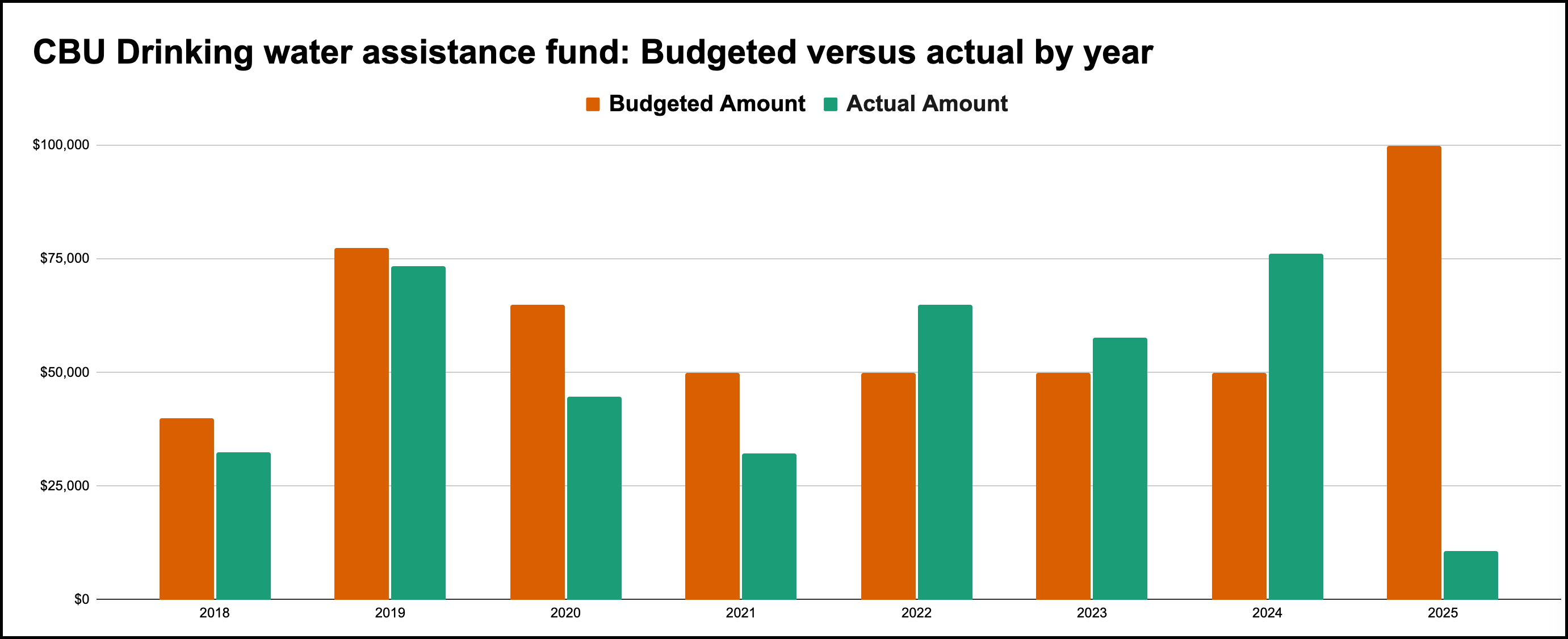
The assistance program is run by the South Central Community Action Program (SCCAP) as part of the organization's Energy Assistance Program (EAP).
SCCAP's EAP is managed by Julie Wilson. She told The B Square that even if a customer is over the eligible income levels for the EAP, they might still qualify for the water assistance program. That's only if they are two months behind in their water bill, but not yet shut off.
To qualify for CBU's water assistance program, a customer has to first apply for the EAP. The water assistance guidelines were changed in 2024 to allow for a household to have three times (300%) the income of federal poverty guidelines, Wilson said.
The water assistance program has an online form that can be used to apply.
Wilson said that even though the last day to apply for EAP for this season is by 5 p.m. on April 14, 2025, it's still possible to "apply for EAP" in order for SSCAP to determine eligibility for their help on their CBU water bill.
Wilson described CBU as very good at referring customers to SCCAP, if they are struggling to pay their bills.
After averaging 160 participants in the water assistance program for 2020, 2021 and 2022, the number dropped to 99 in 2023. In 2024, the number climbed back to 122, but that was still short of earlier numbers. Through the first two months of 2025, 24 households were participating in the water assistance program, according to Zaiger.
Zaiger said she hopes that the assistance program participation numbers for 2025 will wind up outpacing those for the previous couple years. She thinks last year's decision to increase allowable household incomes to 300% of the federal poverty guidelines will help increase participation.

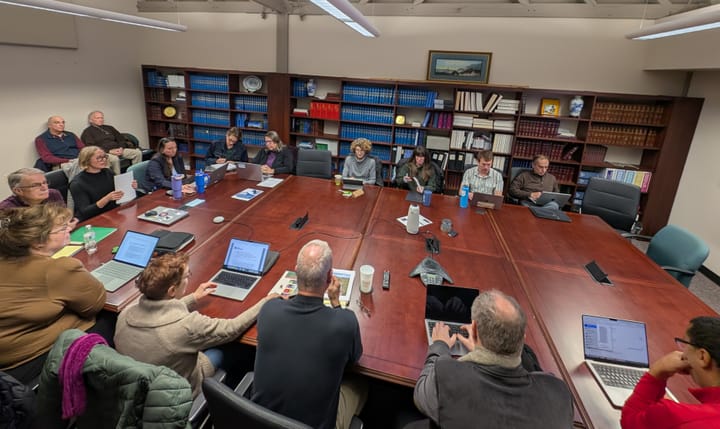
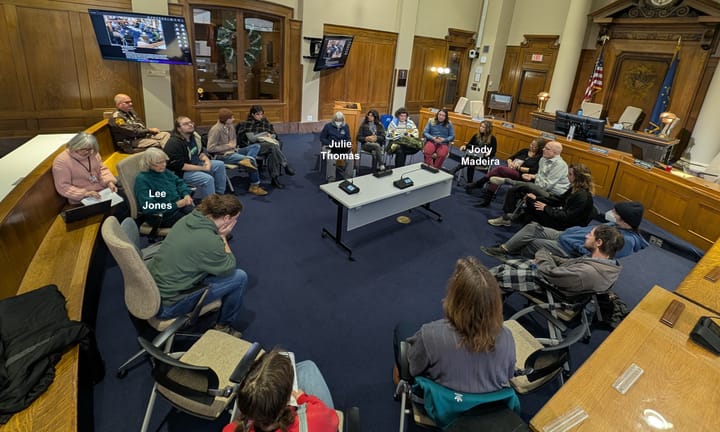
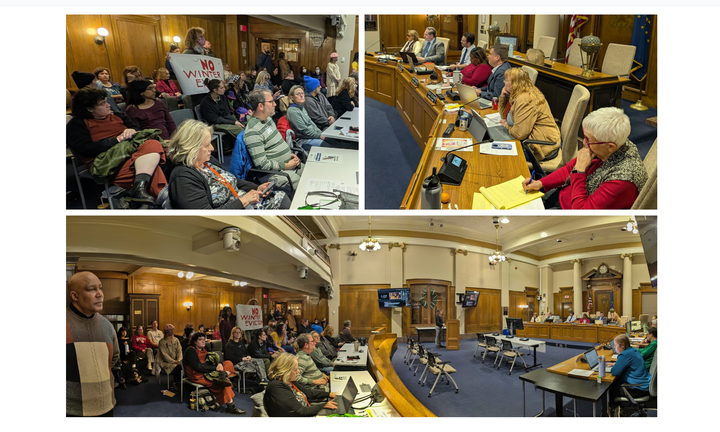
Comments ()